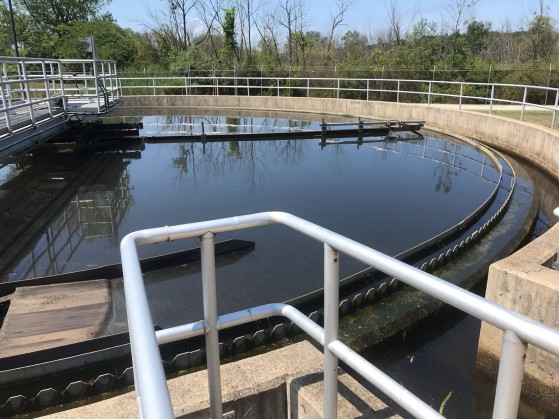Why Treat Wastewater?
When water is used, it comes into contact with bacteria and pollutants. If this wastewater is discharged to the environment without treatment, public and environmental health would be in serious danger. The waste could spread waterborne diseases, harm aquatic life, and harm animals that drink the water.
How Do We Treat Wastewater?
The name of the game is to remove the solids and treat the clear stuff (water).
The GRSD Sewer Authority uses a few methods throughout the treatmernt process.
Primary Clarifiers
Wastewater enters the plant through north and south intercepts.
The wastewater passes through a bar screen and a mechanical filter which remove large objects such as rags, plastics, sand, and grit.
It then gets split between 2 primary clarifiers. Their job is to allow more solids to settle to the bottom of the tank. We call this sludge.
Sludge is removed and sent to the digester to be broken down further.
Sludge Digester
Sludge is removed from the primary clarifiers and travels to the sludge digester. The sludge is broken down futher through anaerobic digestion, which is digestion that occurs without the prensence of oxygen.
Once the sludge is fully digested, or neutralized, it will be trucked to farmland to be used as a natural fertilizer.
Aeration Tanks
The next part of the treatment process is known as an Activated Sludge Process. From the primary clarifiers, the water travels to one of the six the aeration tanks on site, where the bactera in the water serve as “food” for the “bugs” in the aeration tank.
Secondary Clarifiers
The water and bug slurry, known as mixed liquors, is sent to secondary clarifiers.
The “bugs” are returned to the front of the aeration tank while the clear water goes on to be treated in the filters.
Filters
The filters are filled with a mixed bed of charcoal that filters out and captures solids. The water from the secondary clarifiers is pumped through the mixed bed, where the water ultimately overflows the top of the filter and travels on to the contact tanks.
Contact Tanks
There are two sets of contact tanks at the plant. After the filters comes the chlorine contact tank, where the water is disinfected. This allows the water to be rid of any harmful organisms.
The water then travels to the second contact tank. The second tank uses sodium bisulfite to dechlorinate the water before it can leave the plant.
Discharge
And finally, the disinfected water is discharged to the Galien River!







